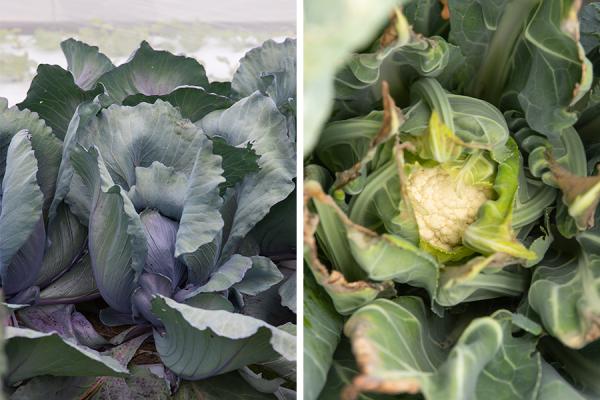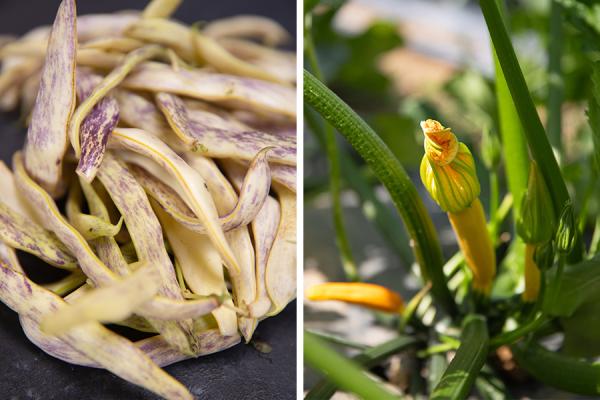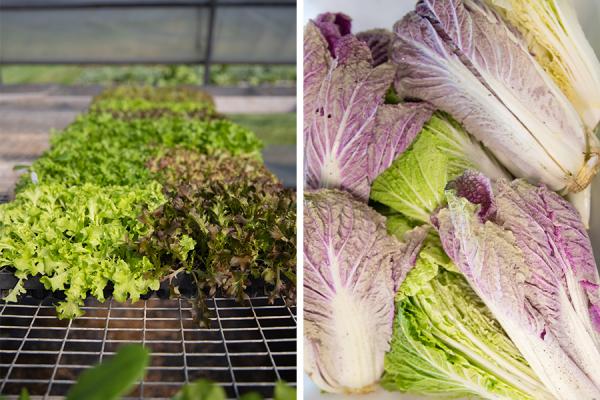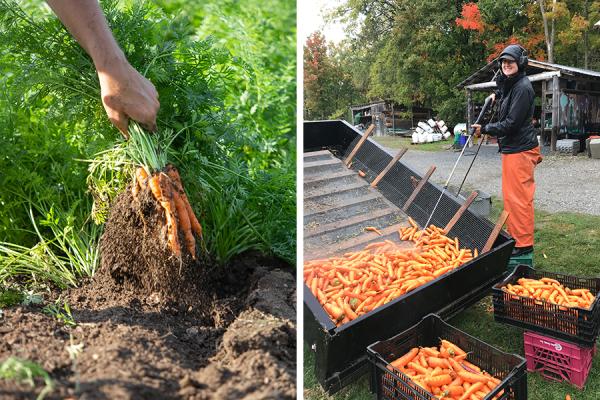Always an inspiration; Thank you.
Extending the Season at the Market Garden
In a typical season at the Market Garden, we carefully plan and schedule the growing of crops to meet the flow of demand at the Inn. About 80% of the restaurant’s menu is sourced locally, and a large portion of that comes directly from our own Market Garden.
As we all know, though, this year has been anything but typical. Instead of opening the Inn restaurant, we have ramped up -- and are now extending -- sales of produce and chef-prepared foods through our Farm Store. For us at the Market Garden, that has meant a lot of shifts to our seeding and harvesting schedules.
In order to harvest crops of cabbage, broccoli, and cauliflower to meet peak Inn demand in late August and mid-September, we usually seed them in the greenhouse in mid-May and early June. If we seed them any later we tend to wind up with too much produce in October when the Inn is slowing down. Growing these fall crops to be ready during this harvest window is difficult, however, because we have to transplant the seedlings in July when it is very hot and dry, and the plants need to grow in the heat of high summer, although they actually prefer the cooler days of late summer and into the fall.
This year, knowing that the typical Inn season was not a reality, we pushed some of our seeding dates back for these crops so that we would have more produce and prepared meals available for our community via the Farm Store in late September, October, and even early November. (The plants would be happier growing, too.) For the same reason, we also did a larger, later seeding of green and yellow beans, the heirloom dragon’s tongue beans, and summer squash and zucchini.
To extend the availability of produce at the Farm Store and meet the demand, we’ve also done additional seedings of some crops. We seeded extra carrots in late June and July, direct seeded and transplanted a few extra successions of radishes, salad turnips, and arugula, and added an extra planting of beets, kohlrabi, and gilfeather turnips, pac choi, and Napa cabbage to our plan.
When looking at season extension, high tunnels are a big help. High tunnels are unheated, plastic-covered structures that give some environmental protection to plants -- more than an open field but less than a heated greenhouse. We recently transplanted lettuce mix, spinach, chard, kale, and spigarello into the high tunnels so we can extend our salad and braising green harvest season, hopefully through December. In late fall, we will be building three more three-season high tunnels at the garden to increase our capacity to grow a larger variety and volume of crops earlier and later in the season. Longer-term, the tunnels also will give us more adaptability in the face of climate change.
So, we’re still busy growing, harvesting, and sharing great produce here at the Market Garden.




